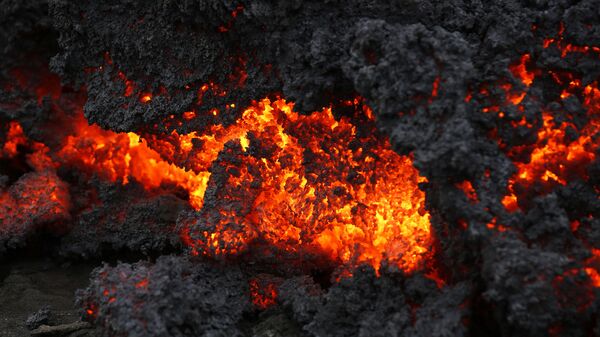Published Tuesday in the Monthly Notices of the Royal Astronomical Society, scientists from McGill University, York University and the Indian Institute of Science Education indicated they used a variety of computer simulations to determine the living conditions on K2-141b.
The distant lava planet, which was originally discovered in 2017, is largely believed to be made up entirely of rock, and as it completes several cycles around its host star in one Earth day, officials found that the temperatures reached on the planet are extreme enough to vaporize rock.
Analysis of the simulations determined that K2-141b’s proximity to its host star keeps roughly two-thirds of the exoplanet permanently facing daylight and reaching temperatures of some 3,000 degrees Celsius. Stuck in perpetual darkness, officials estimated the opposing side of the planet sees temperatures of negative 200 degrees Celsius.
“Remarkably, the rock vapor atmosphere created by the extreme heat undergoes precipitation,” a release issued by McGill University explains. “Just like the water cycle on Earth, where water evaporates, rises into the atmosphere, condenses, and falls back as rain, so too does the sodium, silicon monoxide, and silicon dioxide on K2-141b.”
“On K2-141b, the mineral vapor formed by evaporated rock is swept to the frigid night side by supersonic winds and rocks ‘rain’ back down into a magma ocean. The resulting currents flow back to the hot day side of the exoplanet, where rock evaporates once more,” the release adds.
However, unlike Earth, the conditions on K2-141b aren’t as cyclical. Scientists believe that the mineral composition of the lava planet is likely to change over time, since the return flow to the magma ocean is a much slower process.
Officials involved in the study hope that their continued analysis will offer further insight into the stages of planetary evolution.
Moving forward, the group intends to review data collected by the Spitzer Space Telescope to gain a better understanding of the planet’s opposing hot and cold sides. Additional opportunities to examine K2-141b are anticipated with NASA’s 2021 launch of the James Webb Space Telescope, which will help to analyze the planet’s atmosphere.

